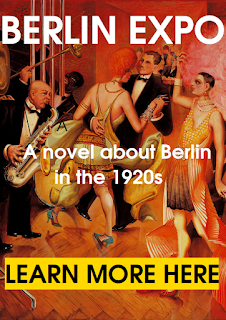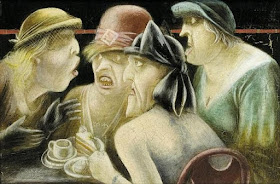Karl Hubbuch
(1891-1979) is most often identified with the style known as Neue
Sachlichket (New Objectivity). Less openly political than colleagues
such as George Grosz and Otto Dix, he practiced nevertheless a realistic style
that criticized society through its blunt honesty.
Hubbuch was born in
Karlsruhe and attended the Academy there. He later studied at the
School of the Museum of Applied Arts in Berlin under Emil Orlik at
the same time as G.Grosz. In 1922, he studied again with Orlik in
Berlin. In 1924, he began teaching lithography at the Karlsruhe
Academy. During the 1920s and early ‘30s, his work was included in
numerous exhibitions, among them the 1925 Neue Sachlichkeit show in
Mannheim and a group show, with Dix and Grosz, at the Galerie
Neumann-Nierendorf in Berlin.
Between 1935 and
1945, Hubbuch was forbidden to work as an artist by the Nazi regime,
and earned occasional money by painting ceramics and cuckoo clocks.
After the war he began exhibiting his work again.
 |
| Karl Hubbuch |
 1928-1929 | |||||
 |
| 1929 |
 |
Corner of Leipziger- and Friedrichstrasse, 1922 |












No comments:
Post a Comment